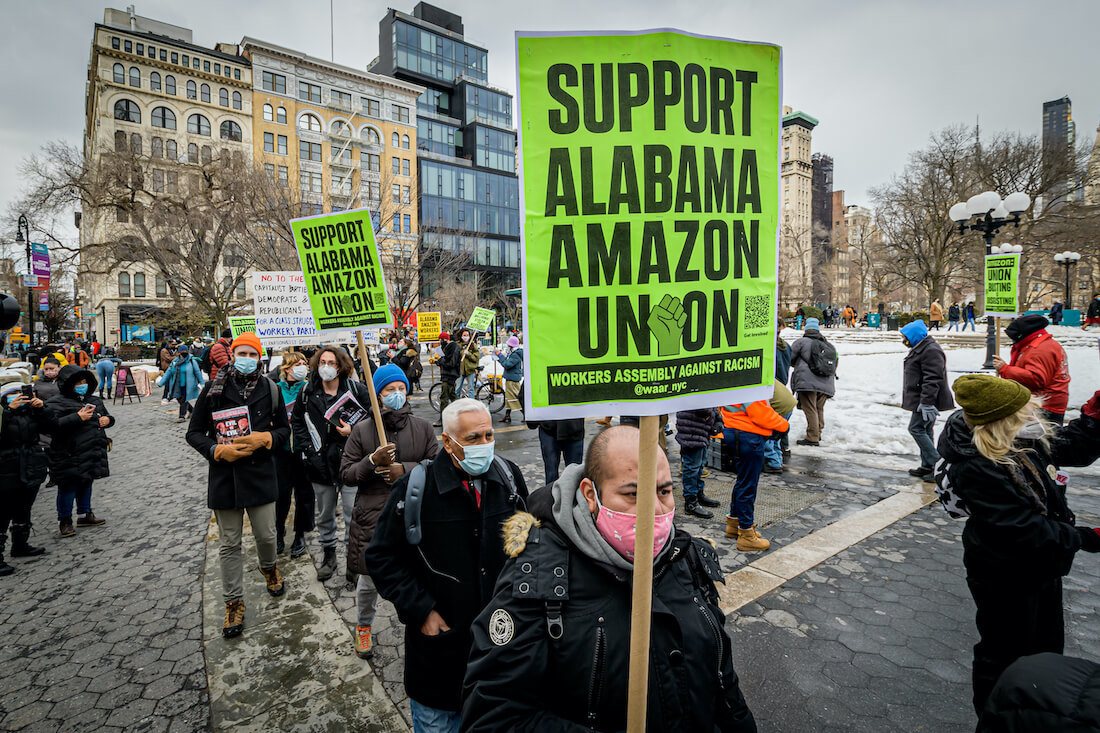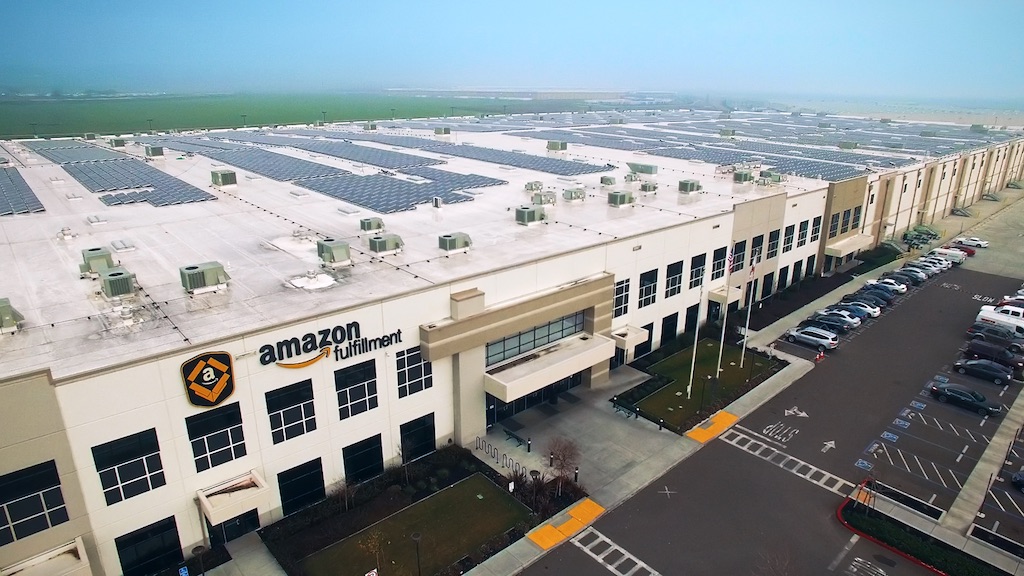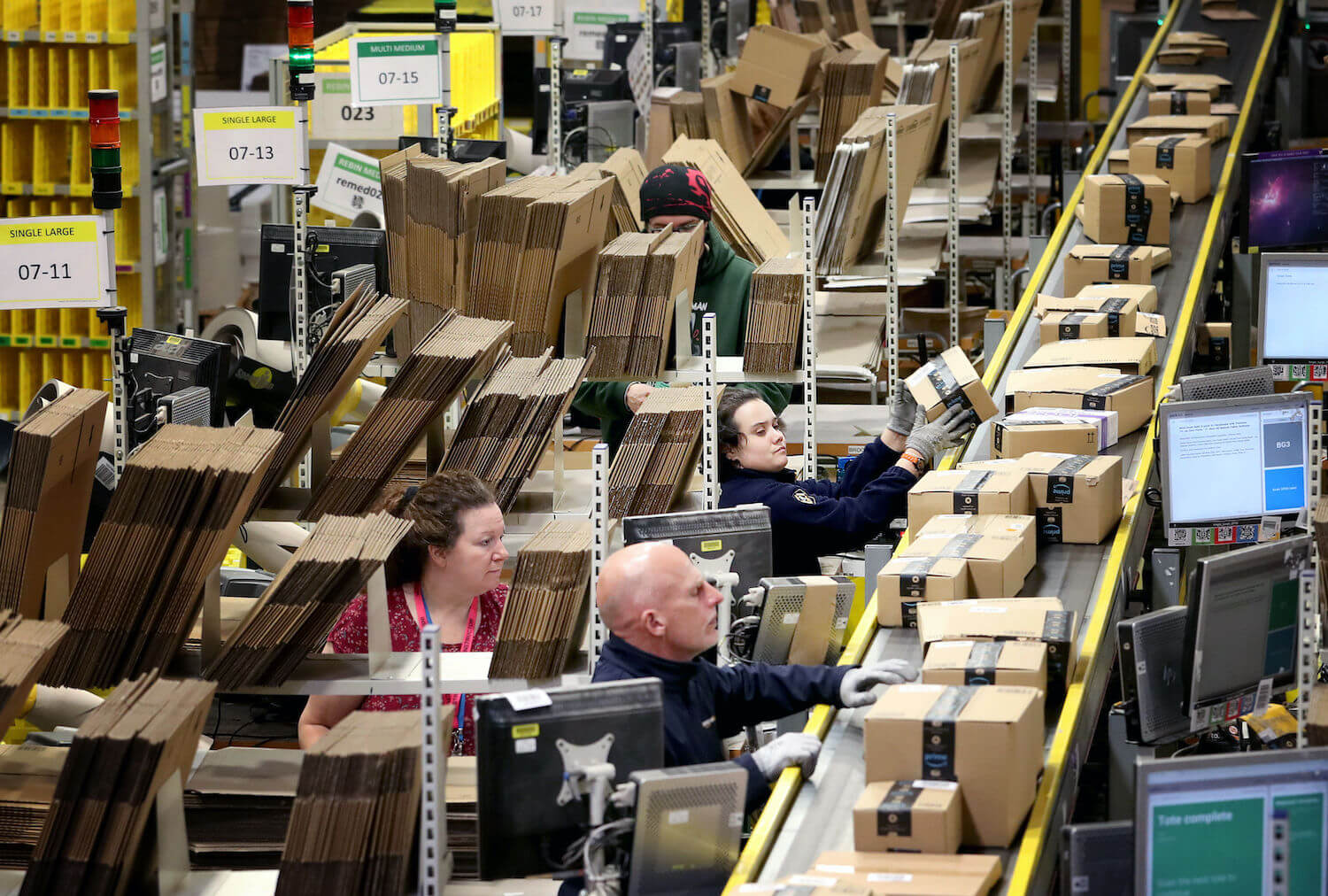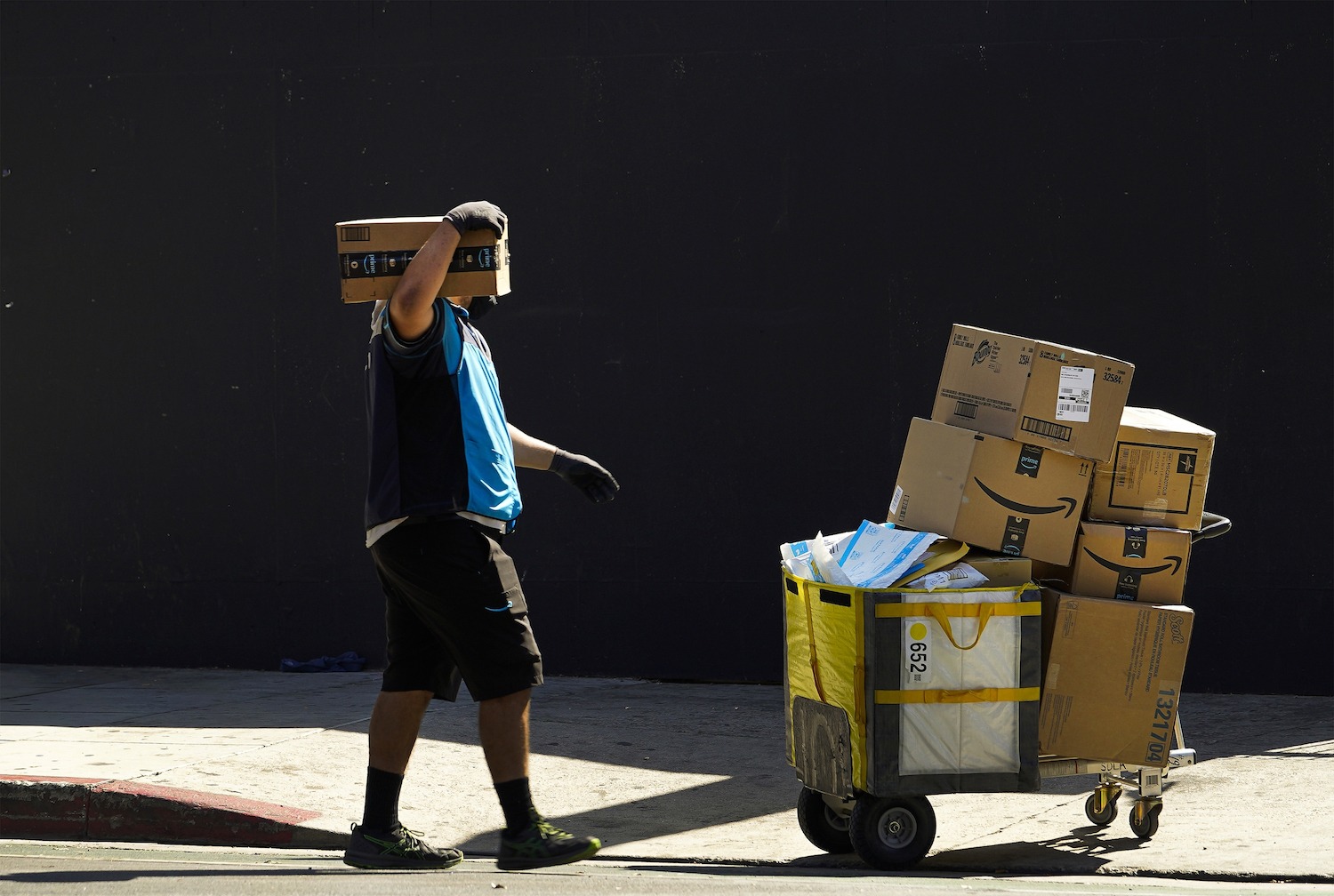
Erik McGregor/LightRocket via Getty Images
The company has fought tooth and nail to prevent its workers from organizing. The moment of truth is approaching.
Working conditions at Amazon warehouses are notoriously tough. Employees are pressured to work at a fast pace, and the company fires people who fail to “make rate.” A 2019 report from The Verge revealed that hundreds of workers had been terminated at a single fulfillment center because they didn’t meet productivity quotas. Employees are allotted two 15-minute bathroom breaks over the course of a 10-hour shift—and that break time includes walking to the bathroom through a building roughly the size of Buckingham Palace.
Now the pandemic has shined an even brighter spotlight on Amazon’s treatment of its employees. The company initially offered workers hazard pay at a rate of $2 per hour, but let benefits lapse in June of 2020. Amazon is also the target of a lawsuit from New York Attorney General Letitia James, alleging the company failed to follow adequate Covid-19 safety procedures. Nearly 20,000 employees of Amazon and its subsidiary Whole Foods had contracted the virus by October, when the company last disclosed illness numbers.
At the same time, Amazon’s sales have soared. A December 2020 report from the Brookings Institute estimated that Amazon could have more than quadrupled extra Covid-19 compensation last year and still earned higher profits than it did in 2019. And founder Jeff Bezos’ net worth has increased by $75.6 billion since the pandemic began. These revelations, coupled with the company’s alleged disregard for employees’ health and emphasis on productivity over all else, suggests the company’s fulfillment centers are ripe targets for unionization efforts.
Though some warehouses in Europe have unionized, this is the first large-scale union vote at any U.S. Amazon fulfillment center.
To wit, at a fulfillment center with nearly 6,000 employees in Bessemer, Alabama, a months-long organizing drive will conclude next week. Employees are currently mailing in their ballots, and the votes will be counted on Tuesday, March 30. If a majority of workers vote “yes” to unionizing, they will then bargain for a new contract with the Retail, Wholesale and Department Store Union (RWDSU), which represents a wide variety of workers at poultry processing plants, retail stores, and elsewhere.
Here’s how the vote will work: Representatives from the National Labor Relations Board (NLRB) will call out the name of each employee who has cast a vote before they place the ballot in a box. Both the union and Amazon will be allowed to challenge any worker’s voting eligibility based on factors like job classification and dates of employment. (If successful, the union will include full- and part-time staff and seasonal associates, but not truck drivers, managers, or office workers.) The ballots of “challenged” voters will be set aside.
[Subscribe to our 2x-weekly newsletter and never miss a story.]
If the final vote tally is decisive, meaning the margin is so wide that the challenged ballots would not impact the outcome, the challenged ballots will not be counted. In this scenario, either party has five days to file objections. An objection might take the form of the union claiming Amazon threatened to retaliate against employees who voted to unionize. It might also look like Amazon claiming that the union somehow broke the rules as it campaigned for votes. At that point, NLRB’s regional director would evaluate the evidence and make a decision about whether or not to hold a hearing.
The company has launched an intensive opposition campaign in Bessemer, holding long anti-union meetings during work hours and sending persistent anti-union texts.
If the final vote tally is not decisive, the challenged ballots come back into play. At that point, NLRB would hold a hearing to decide whether or not to count challenged ballots. Such a hearing could impact—and even potentially reverse—the final vote tally.
Regardless of the outcome, this moment marks a turning point for the retail giant. Though some warehouses in Europe have unionized, this is the first large-scale union vote at any U.S. Amazon fulfillment center (a drive by a small group of mechanics and technicians failed in 2014), and a former executive told Recode that unions are “likely the single biggest threat to the business model.” The company has launched an intensive opposition campaign in Bessemer, holding long anti-union meetings during work hours and even asking the county for control over the traffic light outside the fulfillment center, where union organizers were speaking to employees as they waited for the light to change. Employees also report receiving frequent anti-union text messages.
Politicians on both sides of the aisle have voiced their support for the union drive. President Joe Biden expressed his support for a fair vote earlier this month; Republican Senator Marco Rubio penned an op-ed in USA Today supporting the union. In recent days the campaign has become the subject of intense media attention; The New York Times and Vox also published expansive features on RWDSU and Bessamer today.
A vote in favor of unionization could have massive implications for other fulfillment centers, fueling similar efforts at the more than 100 warehouses across the country. It could even revive efforts to unionize Amazon-owned Whole Foods Market locations. Amazon is the second-largest employer in the United States; successfully unionizing could well reverberate across the warehouse sector and beyond.
The union has cautioned that Tuesday’s vote count may not result in a decisive outcome. In the meantime, organizers continue to stand outside all night long, attempting to recruit workers as they drive to and from work.






